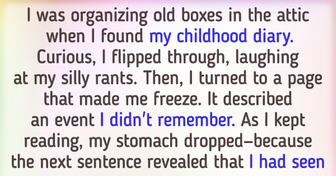10 Times Life Showed Us Unpredictable Twists and Turns

Open your fridge and see what you have in there. There is a chance you’ll find withering vegetables, milk of dubious freshness, or seemingly empty sauce packages. You might be tempted to throw them all out, but before you do, consider saving your food and turning the leftovers into a delicious meal.
Bright Side has drawn up 11 recommendations on how to give new life to the remainders of food and save a fair amount of money at that.
Boiled oats quickly lose their taste and appeal. If you miscalculated and cooked too much, take the leftovers and add some milk, an egg, oil, berries, salt, and sugar, and you will get a dough mixture for baking delicious cookies or muffins.
Don’t forget to include carrots, onions, potatoes, and spices. At the final stage of cooking, you can supplement them with a few spoonfuls of melted cream cheese to make the consistency thicker. This dish will be appreciated by young and old alike, and it doesn’t require any meat.
Cheeses like Parmesan, for example, are rather expensive, so one might want to use them to the maximum extent. A remaining half-dry rind of this stuff added to a broth will make the taste more rich and savory.
You don’t have to get rid of the jar with the chocolate spread left on the walls. Pour some warmed milk into the jar, stir it well — and voilà, a cup of delightful hot chocolate is ready.
It can be used to make fluffy pancakes, crêpes, all kinds of cakes, and home cheeses — including ricotta, which is pretty pricey in stores. However, it’s important to buy quality milk to make sure it goes sour rather than hopelessly rancid.
You can mix the remainders of ketchup and mayonnaise and smear the dough with the mixture, then top it with chopped mushrooms, tomatoes, herbs, salami, sausages, olives, baked or roasted meat, lettuce — anything you can find in the fridge. Sprinkle everything with grated cheese. This is a great way to save some money and still have a nutritious and tasty dinner.
Take bell peppers, tomatoes, string beans, onions, zucchini, broccoli, and other formerly fresh vegetables you can find in your home and put them on a baking tray or in a casserole dish. Add some proteins like chicken or fish, and place everything in the oven. The dish will turn out absolutely scrumptious. We promise.
This is a way of dealing not just with various sauces, but also with broths, olive oil with cut up herbs added in, and even wine. Place them into ice molds and store them in the coldest fridge or freezer compartment. When necessary, they can be used to make appetizing seasoning for a variety of dishes.
If your tomatoes are starting to spoil, don’t hasten to throw them away. Peel them and stew on medium heat for 10 minutes, then blend the resulting paste with garlic. Place the sauce-to-be back on the stove and cook for 5-7 minutes. Season to taste and add some herbs at the end.
This can also be done to other meat products that are under imminent threat of spoiling. It’s especially convenient if you are planning to go on a trip but don’t have enough time to eat everything you have before leaving.
During a long power outage, foods in the freezer can defrost, which might lead to bacterial contamination. When electricity is back, they’ll freeze again — but how can you know whether the power went out if you were on a trip or on vacation? There is a simple way to find out the duration of a power outage. Take a cup of water and put it in the freezer. When the water turns to ice, place a coin on top of it and put the cup back in the freezer. When you get home, check the coin. If it’s at the bottom of the cup, there was a power outage and your food was unfrozen for a long time.
How do you save your food? Share your personal tips in the comments section!











